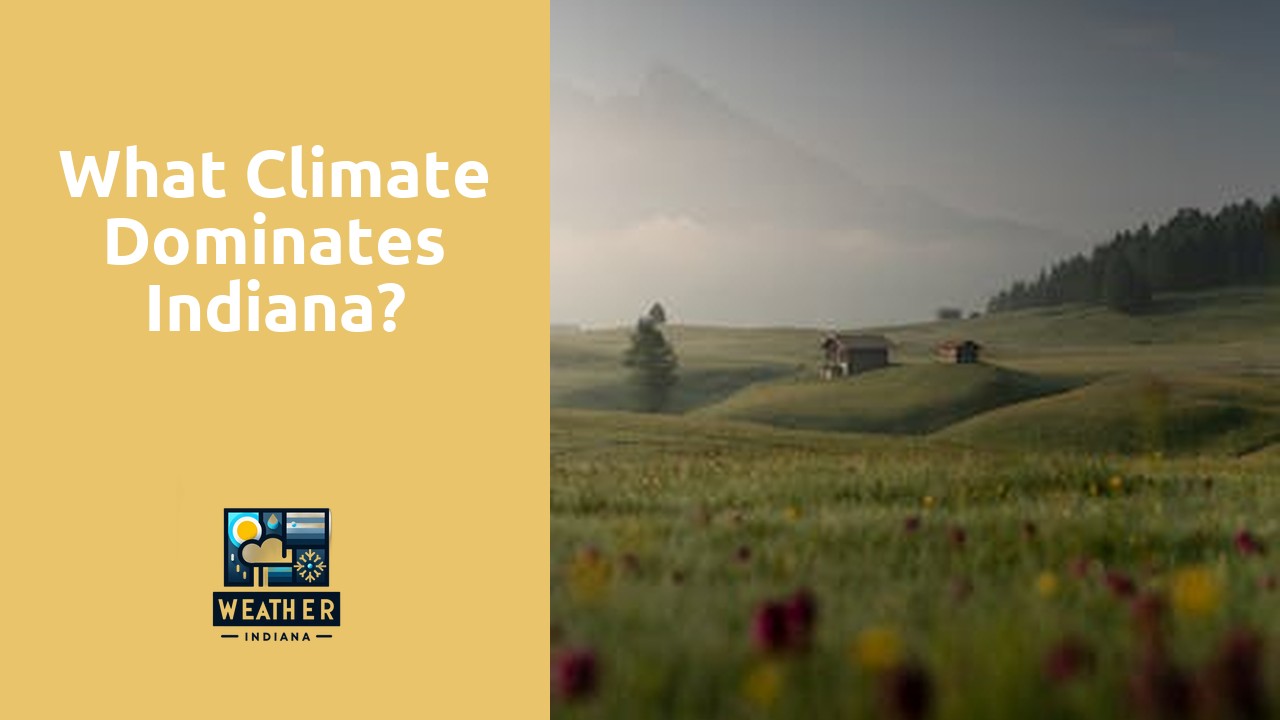Table Of Contents
Climate Change’s Impact on Indiana
Climate change is having a significant impact on the climate of Indiana. Rising temperatures, changing rainfall patterns, and more frequent extreme weather events are becoming increasingly common in the state. These changes pose challenges to various sectors, including agriculture, infrastructure, and public health.
The increased frequency of heavy rainfall events in Indiana has led to more flooding, soil erosion, and water quality issues. These changes can disrupt farming practices, affect crop yields, and harm livestock. Additionally, the changing climate is creating new challenges for urban areas in Indiana, such as the heat island effect, which can lead to higher temperatures in cities compared to surrounding rural areas.
Changes in Precipitation Patterns
Changes in precipitation patterns have been observed in Indiana in recent years, with fluctuations in both the timing and amount of rainfall. These alterations have posed significant challenges for farmers and agricultural activities in the state. The unpredictability of precipitation has made it difficult for farmers to plan their planting and harvesting schedules, impacting crop yield and overall productivity.
Moreover, the increase in heavy rainfall events has led to issues such as soil erosion and waterlogging, affecting the quality of the soil and the health of crops. These changes in precipitation patterns have also raised concerns about the availability of water resources for both agricultural and urban use in Indiana. Addressing these challenges requires a comprehensive understanding of the evolving precipitation patterns and the implementation of adaptive strategies to mitigate the potential impacts on various sectors in the state.
Agriculture and Indiana’s Climate
Indiana’s climate plays a significant role in shaping the state’s agricultural landscape. With a humid continental climate, characterized by hot summers and cold winters, Indiana experiences a range of weather conditions throughout the year. These fluctuating conditions can impact the success of various crops grown in the state, influencing planting times, crop yields, and overall agricultural productivity.
Corn and soybeans are two of the most commonly grown crops in Indiana, and the state ranks among the top producers in the United States. The climate of Indiana is generally favorable for these crops, with the warm summers providing optimal conditions for growth. However, extreme weather events such as droughts, floods, and heatwaves can pose challenges for farmers, impacting their crop yields and overall profitability. Adapting to these changing climate patterns is crucial for Indiana’s agricultural sector to remain resilient in the face of future challenges.
Impact of Weather on Farming Practices
Farming practices in Indiana are significantly influenced by the weather conditions prevalent in the region. The state’s agricultural sector relies heavily on predictable weather patterns for successful crop yields. However, the changing climate and unpredictable weather events pose a challenge for farmers in Indiana. Extreme weather events such as heavy rainfall, droughts, and unseasonal frost can have detrimental effects on crop production and overall farm profitability. Farmers are forced to adapt and implement new strategies to mitigate the impact of these weather-related challenges on their farming practices.
Crop rotation, irrigation techniques, and the use of weather-resistant seeds are some of the strategies employed by farmers to adapt to the changing weather patterns in Indiana. Additionally, advancements in technology, such as weather forecasting tools and climate modeling, help farmers make informed decisions about planting, harvesting, and other farming activities. Despite these adaptations, the unpredictable nature of Indiana’s weather continues to pose a significant risk to the state’s agricultural industry.
Urbanization and Indiana’s Weather
Urbanization in Indiana has significantly influenced the state’s weather patterns. As cities expand and more concrete surfaces are built, a phenomenon known as the heat island effect occurs. This effect causes urban areas to become hotter than their rural surroundings due to the absorption and retention of heat by structures and pavement. As a result, cities in Indiana experience higher temperatures compared to the surrounding rural areas.
The heat island effect in urban areas can have various consequences on Indiana’s weather. It can lead to increased energy consumption for cooling buildings, heightened heat-related illnesses among residents, and even alterations in precipitation patterns. Additionally, the higher temperatures in cities can impact local ecosystems and wildlife, disrupting the balance of nature in these urban environments.
Heat Island Effect in Urban Areas
Urban areas in Indiana are particularly vulnerable to the heat island effect, where cities experience higher temperatures compared to surrounding rural areas. The abundance of concrete, asphalt, and buildings in urban environments absorbs and retains heat, causing temperatures to rise significantly. As a result, cities like Indianapolis and Fort Wayne often experience hotter conditions, especially during the summer months.
The heat island effect can have various implications on urban residents, including health risks due to increased heat stress, higher energy demands for air conditioning, and poorer air quality. Additionally, the elevated temperatures in cities can impact local ecosystems and wildlife, disrupting natural habitats and biodiversity. It is crucial for authorities and urban planners to implement strategies to mitigate the heat island effect, such as increasing green spaces, implementing cool roofs, and promoting sustainable building practices to create more resilient and comfortable urban environments.
FAQS
What type of climate dominates Indiana?
Indiana has a humid continental climate, characterized by hot summers, cold winters, and moderate humidity throughout the year.
How is climate change impacting Indiana?
Climate change is causing shifts in temperature and precipitation patterns in Indiana, leading to more extreme weather events such as heavy rainfall, droughts, and heatwaves.
How are precipitation patterns changing in Indiana?
Precipitation patterns in Indiana are becoming more erratic, with an increase in heavy rainfall events and longer periods of drought, impacting agriculture, water resources, and infrastructure.
What is the impact of weather on farming practices in Indiana?
Weather variability in Indiana affects farming practices, leading to challenges in crop planning, pest management, and water irrigation, ultimately impacting agricultural productivity.
How does urbanization influence Indiana’s weather?
Urbanization in Indiana contributes to the heat island effect, where urban areas experience higher temperatures than rural areas, impacting local weather patterns and exacerbating heat-related health risks.

